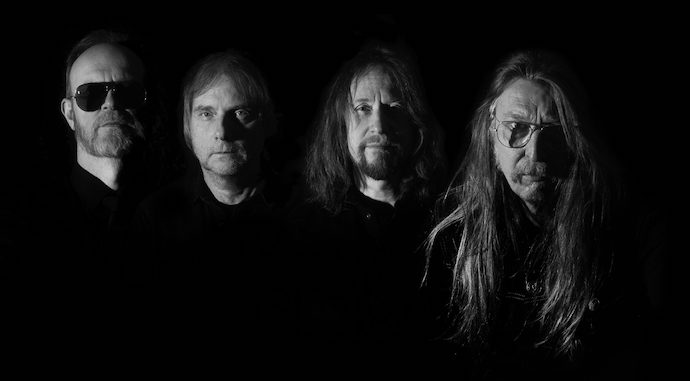
(The Swedish band Stillborn trace their roots to 1984, and in June of this year, 40 years later, the original lineup brought forth a new album named Netherworlds. That was cause enough for Comrade Aleks to organize the following interview with the band’s vocalist and bassist Kari Hokkanen. Credit for all the accompanying photos goes to Bosse Melin.)
The Swedish gothic doom band Stillborn turns forty this year, and no matter what anyone says about “gothic doom”, classifying every other album of Paradise Lost, Theatre of Tragedy, or My Dying Bride as part of this genre, it was these Swedes who technically discovered it.
It was Stillborn who, in their debut album Necrospirituals (1989), mixed Black Sabbath riffs, without bringing them to the scale of Candlemass, with horror aesthetics and a deep low voice in the style of Fields of the Nephilim and Sisters of Mercy.
Having recorded three notable full-lengths, Stillborn broke up in 1996, and then they were remembered only in connection with Messiah Marcolin’s attempt to return to the scene under the name Colossus, and also thanks to Paradise Lost, who recorded a cover of Stillborn’s hit “Albino Flogged in Black” as a bonus to One Second. Entombed did the same in 2004, and they didn’t hesitate to make a video for the song.
The song turned out to be so influential that Stillborn themselves have now recorded its sequel, “Albino Flogged in Blue.”
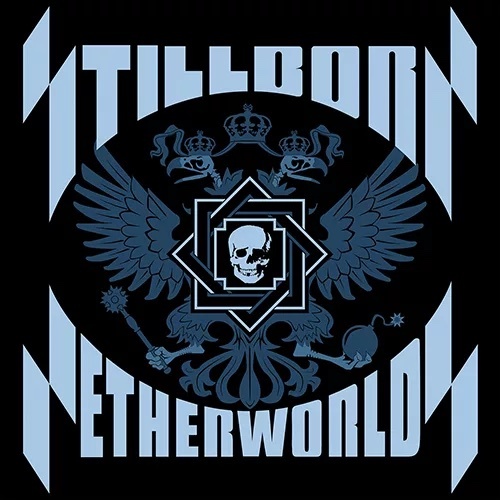
Stillborn haven’t done anything fundamentally new in their fresh full-length work Netherworlds, and the new material can be considered a reflection of the old. And yet in fact it will give the listener everything that can be expected from this band. The same cumbersome riffs, the same slow tempo, and the sepulchral, bone-chilling voice of Kari Hokkanen, the same cynical lyrics and the witching darkness of decadence and decay.
It seems that Stillborn haven’t changed over time, and why should they? All four members started together in 1984, and the fact that they are not going to change much, but still maintain their brand, can be considered an achievement. However, we caught the band’s frontman Kari Hokkanen and tortured him with questions about anniversaries and Stillborn’s connection with the “gothic” scene.
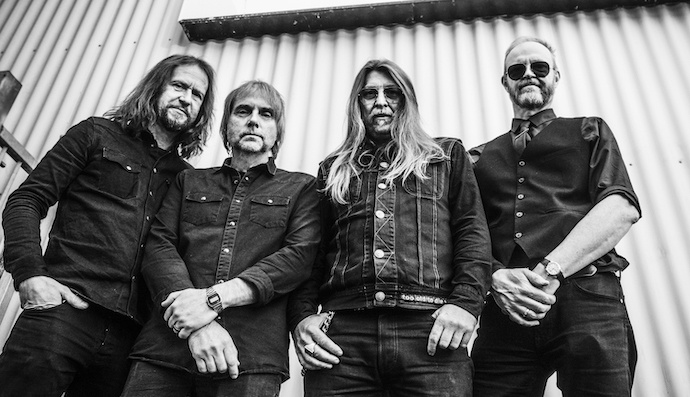
Hi Kari! How are you? What’s going on in the band’s life?
Hi, we’re all doing just fine, and thanks for letting us participate! Right now we are busy rehearsing and get ready for our live shows that start after the summer, in September. Such a joy to meet our fans again!
The band originally was founded in 1984, and that means you have a 40th anniversary this year. How do you plan to celebrate it, if you do at all?
Yes, what can you say, time flies . It’s been an exciting journey, with the original members having a long break, 28 years, between our first release Necrospirituals in 1989 and the sequel album Nocturnals in 2017, and now our new album Netherworlds this year. First and all we in the band are very good friends; if we wouldn’t have been in the rock n’ roll business we probably would have had our own club for obscure poetry, or an apocalyptic sect on the countryside or something like that, as long as we did something together. Well, 40 years? We probably celebrate with a couple of beers.
Why do you entitle Nocturnals as the sequel album, skipping The Permanent Solution (1991) and State of Disconnection (1992)?
Soon after the release of Necrospirituals in 1989 the singer and songwriter Kari left the band and completely new songwriters and members entered, and the band took a very different direction musically. The signum of original Stillborn, the Necrospirituals-sound, were soon gone. When we the original members started again in 2015, there was no discussion, we wanted back to that original and true sound of the band. Therefore, The Permanent Solution and State of Disconnection (both great records, though!) are sidetracks and parentheses in the bloodline of our true sound and history.

This year is also 35th anniversary of Necrospirituals, and there weren’t any reissues since 2017 (?). Don’t you see an opportunity and necessity to re-release it once more?
Wow, as said, time flies. In 2013, at record store day, there was a re-release of the Necrospirituals-LP by the music store Bengans in Sweden. We have no plans right now to release it again.
How would you sum up Stillborn’s achievements for your career? What were your highlights? Don’t you feel that you could get more?
From our point of view, we’re still on this journey we started 40 years ago, but we’re of course very pleased that we and our songs obviously had an impact on the music scene from the beginning. It wasn’t until the early ’90s, when bands like Paradise Lost and Type O Negative emerged, that we realised there was a genre called gothic metal. With Nocturnals and Netherworlds we try to keep up the right Stillborn spirit, protect our colours, and hold our flag high. And the journey continues; hopefully more is yet to come.
Your new album Netherworlds appeared just out of the sudden. What drove you to keep on playing this music after all these years?
We love this music and love to hang around with each other, that’s our engine and motivation.
Do you feel that this grim, bitter, and kind of cynical music fits well to your age now? How natural was it to write songs like these?
With life experience, I would say that it’s easier to write this kind of sad and cynical songs today. Look at the world around you, madmen now leading countries, wars raging, it’s a harsh place for many people. We consider our songs as a journey, an exploration of the darkest sides of the human mind and human deeds, and what consequences this brings to others. Almost all of the tunes therefore have an edge of sadness and sorrow.

Your previous album Nocturnals was released seven years ago. Did you start to write new songs immediately or was this process stretched in time?
We’ve been working on new material all the time since the release of Nocturnals, and Netherworlds is the fruit of that work. Though the process this time has been a little different, I would say more precise. Since this time we had a lot more songs to choose from, we’ve picked them more carefully, and this time it took seven years to finish the project. Yet, as mentioned, it was 28 years between the previous releases, so this is a huge improvement.
Did you have a kind of special sound or vibes which you wanted to reflect in Netherworlds? Do you have a general concept behind it – musically or lyrically?
The creative process is very open. The melodies are the key, and we always keep them simple and meditative. The songs we put on the record are those we feel have the right edge, others we left out. The most work is put in the refrains, the backbone of every song. For every good song you make, you just must throw away ten. The next part is to get the right blend between music and lyrics to complete the Stillborn concept. The lyrics are of course very important, to give the songs the right mood.
And then how would you sum up Stillborn’s concept?
Slow, repetitive, and brutal, but at the same time fragile, beautiful, and bittersweet.
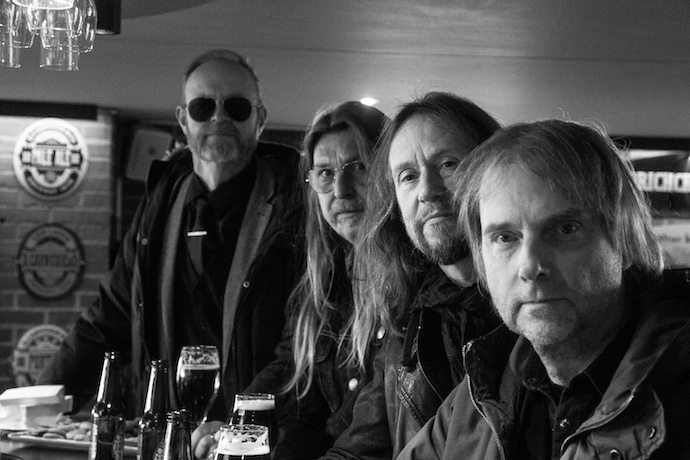
How did you compose the instrumental part of this material? What kind of features did you aim to achieve? A special setting for your equipment which you kept for decades or something?
The process of composing the instrumental parts are very similar to the creative process for melodies and refrains. As with all music you want to create something that not just sounds, but FEELS; the listener must get the music under the skin and feel the tickling along the spinal cord. That’s the aim, and then you have succeeded.
This time we recorded and produced the album all by ourselves, a very interesting and developing procedure. That way we had plenty of time to refine every sound and instrument.
There’s a reminder of your glorious past here – “Albino Flogged in Blue”, which is connected with your debut album Necrospirituls (1989). How do you see the connection between this track and your vintage hit “Albino Flogged in Black”?
Yes, the two songs are connected. If “Albino Flogged in Black” was an illusional and psychotic horror story about crossing and moving borders of evil and fantasies, “Albino Flogged in Blue” is the cruel awakening many years later for the main character, revealing the cold, pure, and shocking emptiness when there is nothing true in life, and the icy insight that there never was.
By the way, I remember that I learnt about Stillborn because of Paradise Lost’s cover of this song. How did this cover benefit you back then? Did they approach you before using it?
I think they released it in the end of the ’90s. We didn’t know about it in advance, but I remember I was glad and honored that they liked the song so much that they put it on an album. I see it as a tribute to us and our impact on the music scene.
It was a Japanese edition of the One Second album (1997). Other new song titles draw the attention as well. How would you comment on the lyrics of tracks like “Motherland” and “We Monkey”?
As on Nocturnals many of the songs on Netherworlds have an edge of sadness, describing the evil of man and the dark sides of human behaviour in different ways. If “Motherland” is about war and leaders with megalomania who don’t care about the consequences for common young people, “We Monkey” is about what happens when the thin membrane of cultural protection in our society breaks and reveals what the nature of man is capable of. Look what happened in former Yugoslavia and Rwanda in the ’90s. History is an important topic for all people. If we know our history, we also could learn from it, and hopefully not repeat earlier mistakes.
“Abigail” is a popular name in metal culture due to the famous witch Abigail Williams, whose image inspired a lot of bands. What’s your song about? Have you also succumbed to her charms?
Yes, The song is about Abigail Williams and the Salem witch trials, 1692.
Really? Why did you decide to approach this topic finally?
The Salem witch trials is an interesting theme because it says so much about human nature. Under certain conditions, pure fantasies can be magnified and exploited by those in power, in this case by church and state, to kill people. And humans can be convinced to believe the most bizarre “truths”. We saw it then and we will see it again, in new guises.
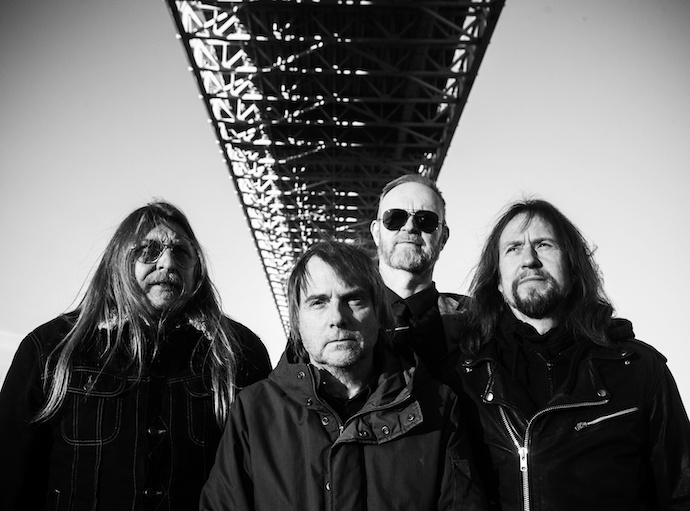
Despite all these years Stillborn sound very gothic. Are you still interested in gothic culture? Did it managed to survive all the changes inside the metal scene?
Probably you nowadays could call our music gothic metal, though we have never really considered ourselves as pure gothic, not even a metal band. Our biggest influences those days were Joy Division, Black Sabbath, Sisters of Mercy and Motörhead, but we were also big fans of movie soundtrack composers like Morricone and Goblins, and we loved horror movies.
We just try to make and play our own music, that’s the original essence of Stillborn, first heard on Necrospirituals, and then Nocturnals and now Netherworlds. That’s the thin red line through these 40 years.
Yes, I know that Stillborn never was a pure “gothic” band. Actually, despite all this confusion around “gothic doom”, logically you were the first ones in this genre, as you mixed (mentioned above) “gothic” influences (Joy Division, Sisters of Mercy) with the doomy riffs of Black Sabbath. And later Paradise Lost became “gothic doom” because of some Sisters of Mercy influences; Theatre of Tragedy became “gothic doom” because of “gothic” atmosphere and a soprano; and My Dying Bride became “gothic doom” because of “gothic” atmosphere and the violin. I want to say that there weren’t bands which came close to Stillborn’s sound and aesthetic. Maybe only Jack Frost. How do you measure Stillborn’s influence on other bands?
It’s hard for us to measure our influence on others. What we know is that we and our songs obviously had some impact on the music scene, due to the covers made of “Albino Flogged in Black”, and we often hear from other artists that we have inspired them. But we don’t think so much about that, we just keep doing our thing, regardless what others say or do.
What were the band’s highlights back in the ’80s and ’90s?
There were many fun moments. In the beginning we had a fire eater on stage, that was awesome! Another fun highlight is when the band appeared on Swedish television, in a very serious show about how heavy metal, and our band especially, destroys and corrupts the youth.
Do you plan to support the release with a series of gigs? Do you want to perform live?
Yes, we love to perform live! That’s where we meet our fans, such an honor, an awesome experience!
Did you play live a lot in between Nocturnals and Netherworlds?
We did some gigs, mostly in Sweden but also in Denmark, and we were at Hammer of Doom in Germany, 2018.
What are your further plans for the rest of 2024?
We’re playing live — the first ones are our hometown Gothenburg on September 6th and then Copenhagen on September 20th.
https://www.facebook.com/stillbornsweden
https://www.stillbornsweden.com/

I mixed the”Necrospitual”album!
Best wishes to Stillborn members!
I never forget when a friend played Albino flogged in black for me back in the 80’s. That voice!